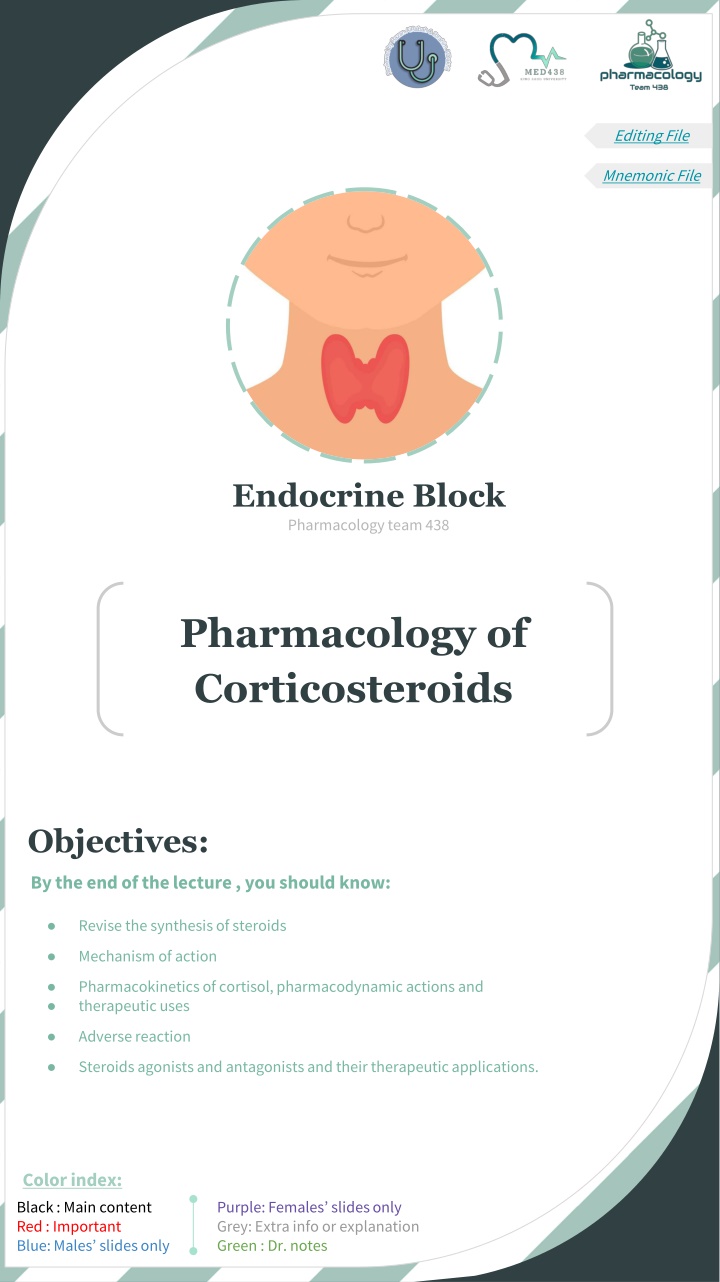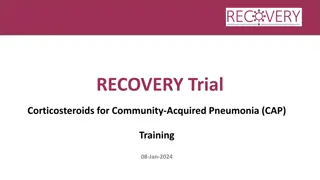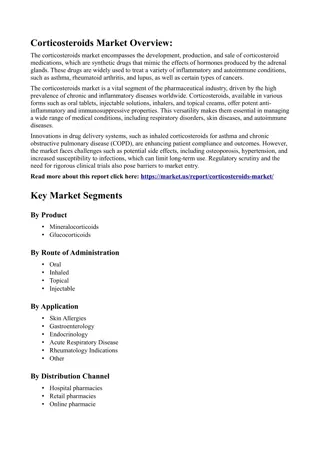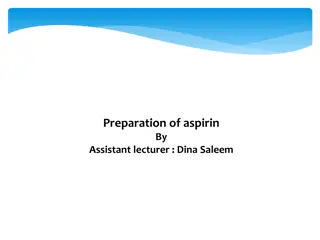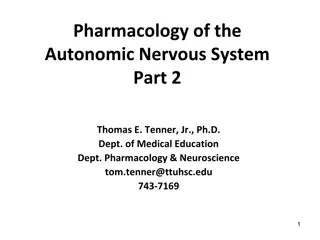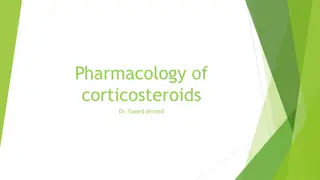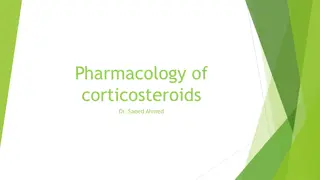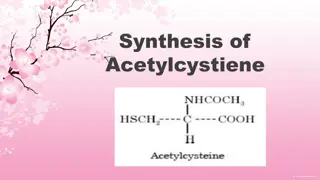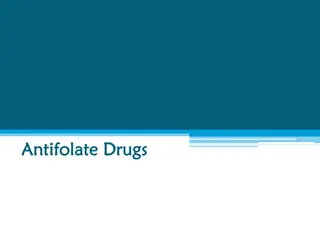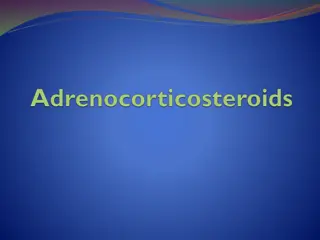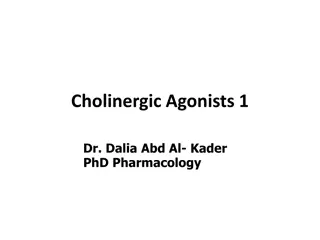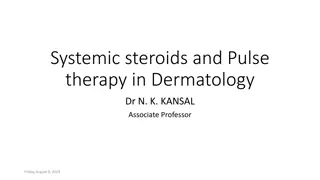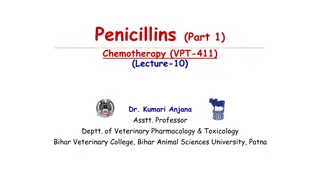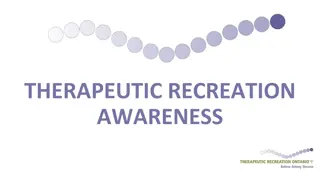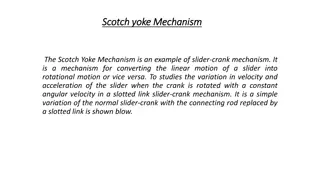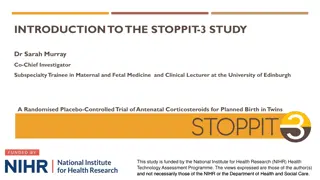Pharmacology of Corticosteroids: Synthesis, Mechanism of Action, and Therapeutic Uses
Corticosteroids are steroid hormones produced by the adrenal cortex, divided into glucocorticoids and mineralocorticoids. They play crucial roles in metabolism, immunity, inflammation, and electrolyte balance. Glucocorticoids like cortisol stimulate gluconeogenesis, influence glucose levels, and have catabolic effects on muscle, bone, and immune functions. Understanding their biosynthesis, mechanism of action, and effects is important for managing various conditions where corticosteroids are used therapeutically.
Download Presentation

Please find below an Image/Link to download the presentation.
The content on the website is provided AS IS for your information and personal use only. It may not be sold, licensed, or shared on other websites without obtaining consent from the author.If you encounter any issues during the download, it is possible that the publisher has removed the file from their server.
You are allowed to download the files provided on this website for personal or commercial use, subject to the condition that they are used lawfully. All files are the property of their respective owners.
The content on the website is provided AS IS for your information and personal use only. It may not be sold, licensed, or shared on other websites without obtaining consent from the author.
E N D
Presentation Transcript
Editing File Mnemonic File Endocrine Block Pharmacology team 438 Pharmacology of Corticosteroids Objectives: By the end of the lecture , you should know: Revise the synthesis of steroids Mechanism of action Pharmacokinetics of cortisol, pharmacodynamic actions and therapeutic uses Adverse reaction Steroids agonists and antagonists and their therapeutic applications. Color index: Black : Main content Red : Important Blue: Males slides only Purple: Females slides only Grey: Extra info or explanation Green : Dr. notes
Biosynthesis of Adrenal Hormone1 Mineralocorticoids Glucocorticoids Sex hormones Cholesterol ACTH 11-OH Dehydroepiandro sterone (DHEA) 11 OH 17,20 lyase Pregnenolone pregnenolone 11-OH 11 OH 17,20 lyase Progesterone Androstenodione progesterone 11-Deoxy corticosterone 11-Deoxy cortisol Testosterone Corticosterone AT II -Dihydrotestosterone -Estradiol Aldosterone Cortisol Corticosteroids Corticosteroids are steroid hormones produced by the adrenal cortex. They consist of two groups: They have important effects on intermediary3 metabolism, catabolism, immune responses, growth & inflammation. They have salt- retaining activity which regulate Na & K reabsorption in the collecting tubules of the kidney Glucocorticoids: Cortisol (Hydrocortisone2) Mineralocorticoids: Aldosterone Mechanism of action: Corticosteroid is present in the blood bound to the corticosteroid binding globulin (CBG) and enters the cell as the free molecule. 1 2 The intracellular receptor is bound to the stabilizing proteins, including heat shock protein 90 (Hsp90) and several others (X). When the complex binds a molecule of steroid, the Hsp90 and associated molecules are released. 2 3 1 The Steroid receptor complex enters the nucleus as a dimer, binds to the glucocorticoid response element (GRE)on the gene, and regulates gene transcription by RNA polymerase 2 and associated transcription factors. 3 4 4 The resulting mRNA is edited and exported to the cytoplasm for the production of protein that brings about the final hormone response. 1: all are derivatives of cholesterol 2: synthetic/pharmaceutical form of cortisol. 3: Are all reactions related to generation and storage of metabolic energy
Effects of Glucocorticoids: Glucocorticoid stimulate gluconeogenesis, as a result: Blood glucose rises Insulin secretion is stimulated Lipolysis and lipogenesis are stimulated. With a net increase of fat deposition in certain areas [e.g. the face (moon facies), shoulder and back (buffalo hump)] These effects occur when the patient is treated with 100 mg (high dose) of hydrocortisone or > for longer than 2 weeks. Metabolic effects Glucocorticoids cause muscle protein catabolism( muscle mass/muscle wasting). Lymphoid and connective tissue fat and skin undergo wasting . Catabolic effects on bone lead to osteoporosis In children growth is inhibited1. Catabolic effects Glucocorticoids inhibit cell mediated immunologic functions, especially dependent on lymphocytes & decrease interleukins secretion. Glucocorticoids do not interfere with the development of normal acquired3immunity but delay rejection reactions in patients with organ transplants. Immunosuppressive effects2 Glucocorticoids have importantinhibitory effects on the distribution, function and migration of leukocytes. Suppressive effect on the inflammatory cytokines & chemokines. These drugs increase neutrophils and decrease lymphocytes, eosinophils, basophils and monocytes. Inhibit phospholipase A24& Prostaglandins synthesis. Anti inflammatory effect2 Renal: Glucocorticoids such as cortisol are required for normal renal excretion of water loads. CNS:When given in large doses these drugs may cause profound behavioral changes (first insomnia & euphoria then depression). GIT: Large doses also stimulate gastric acid secretionand decrease resistance5to ulcer formation. Other effects 1: Steroids are contraindicated in children 2: most common therapeutic uses of steroids.. 3: = Adaptive. 4: enzyme responsible for liberation of arachidonic acid (first step in the arachidonic acid pathway) which inhibit the production of all prostanoids and leukotrienes. 5: decrease prostaglandins
Natural Cortisol ( hydrocortisone) Glucocorticoids Synthetic E.g Prednisone \ Dexamethasone1 Budesonide \ Beclomethasone Classification of Corticosteroids Agonist Natural Aldosterone Mineralocorticoids Synthetic Flucocortisone Glucocorticoids receptors E.g Mifepristone Receptor antagonist Mineralocorticoids receptors E.g Spironolactone Antagonist Synthetic inhibitors E.g Ketoconazole Glucocorticoids Natural cortisol (hydrocortisone) Synthetic Glucocorticoids is the major natural glucocorticoid. The physiologic secretion of cortisol is regulated by adrenocorticotropic (ACTH) varies during the day (Circadian rhythm). Peaks in the morning and trough (declines) in midnight. Prednisone and its active metabolite prednisolone Dexamethasone Budesonide Beclomethasone Drugs & secretion rate Given orally, cortisol is well absorbed from GIT Cortisol in the plasma is 95% bound to CBG It is metabolized by the liver & has short duration of actioncompared with the synthetic congeners It diffuses poorlyacross normal skin & mucous membranes The cortisol molecule also has a small but significant mineralocorticoid effect. This is an important cause of hypertension in patients with cortisol secreting adrenal tumor or a pituitary ACTH secreting tumor (Cushing s syndrome) Their properties in compared to cortisol include: longer half life longer duration of action reduce salt retaining effect better penetration of lipid barriers for topical activity. P.K 1: long acting.
Glucocorticoids Cont... Drugs Natural cortisol (hydrocortisone) Synthetic Glucocorticoids Adrenal Disorder: Addison s disease (chronic adrenocortical insufficiency) 1. 1. Acute adrenal insufficiency associated with life threatening shock, infections or trauma 1. Congenital adrenal hyperplasia (in which synthesis of abnormal forms of corticosteroids are stimulated by ACTH). Non-adrenal Disorder: Allergic reactions1(e.g. bronchial asthma, angioneurotic edema,drug reactions, urticaria, allergic rhinitis) a. Beclomethasone& budesonide have been developed for use in asthma and other condition in which good surface activity on mucous membrane or skin is needed and systemic effects are to be avoided. 1. a. Rapidly penetrate the airway mucosa but have very short half lives after they enter the blood, so that systemic effects and toxicity are greatly reduced. (advantage) Uses Collagen vascular disorder2(e.g rheumatoid arthritis, systemic lupus erythematosus, giant cell arteritis, polymyositis, mixed connective tissue syndrome) 1. 1. Organ transplants (prevention & treatment of rejection immunosuppression) 1. GI disorders(e.g inflammatory bowel disease) Hematologic disorders3(leukemia, multiple myeloma, acquired hemolytic anemia, acute allergic purpura) 1. 1. Infections (acute respiratory distress syndrome, sepsis) Neurologic disorders4 (to minimize cerebral edema after brain surgery, multiple sclerosis). 1. 1. Pulmonary diseases (e.g. aspiration pneumonia, bronchial asthma, sarcoidosis) 1. Thyroid diseases (autoimmune diseases:malignant exophthalmos, subacute thyroiditis) 1. Renal disorders(nephrotic syndrome) Miscellaneous(hypercalcaemia5mountain sickness). 1. Toxicity: Cushing s syndrome (iatrogenic, by higher doses > than 100 mg hydrocortisone daily for > than 2 weeks characterized by moon shape face & buffalo hump) 1. 1. Increased growth of fine hair on face, thighs & trunk, myopathy, muscle wasting, thinning of skin6, Diabetes Mellitus 1. Osteoporosis & aseptic necrosis of the hip 1. Wound healing is impaired ADRs 1. Peptic ulcer ( GI acidity) 1. Acute psychosis, depression 1. Subcapsular cataracts (necrosis of the epithelium) 1. Growth suppression 1. Hypertension Adrenal suppression7 1. 1: due to their immunosuppressive effect. 2: a group of disorders of connective tissues. 3: since all are immune related cancers, we could use the immunosuppressive effects of glucocorticoids to treat. 4: Dexamethasone is mostly used in neurological disorders due to its long duration of action and low salt-retaining activity. 5: glucocorticoids can be used in hypercalcemia since it helps increase calcium secretion and decrease its absorption. 6: due to poor healing , connective tissue wasting. 7: already high cortisol by external sources will suppress the adrenal secretion of cortisol.
Methods for minimizing corticosteroid toxicity: 1 2 Local application (e.g; aerosol for asthma) Alternate day therapy (to reduce pituitary suppression) To avoid adrenal insufficiency in patient who have had long term therapy, additional Stress doses may need to be given during serious illness or before major surgery 4 3 Tapering1the dose soon after achieving a therapeutic response. Some commonly used natural and synthetic corticosteroids for general use Female slide only Activity Agents Anti-inflammatory Topical Salt-retaining Short to medium acting glucocorticoids Hydrocortisone (cortisol) 1 1 1 Cortisone 0.8 0 0.8 Prednisone 4 0 0.3 Prednisolone 5 4 0.3 Methyl- prednisolone 5 5 0.25 Meprednisone 5 - 0 Intermediate acting glucocorticoids 53 Triamcinolone 5 0 Paramethasone 10 - 0 Fluprednisolone 15 7 0 Long acting glucocorticoids Betamethasone 25-40 10 0 Dexamethasone 30 10 0 Mineralocorticoids Fludrocortisone 10 0 250 Explanation of the table: First, you need to understand that all the numbers compare the drugs to the physiological glucocorticoid cortisol (is why all of its numbers are 1) All synthetic drugs have better anti-inflammatory action than cortisol. Most synthetic drugs (except the ones that are indicated with 0 activity) have better topical action than cortisol (which means they penetrate lipid barriers better). All synthetic drugs have lesssalt retaining action (advantage) EXCEPT Mineralocorticoids. (Dr.Alia: no need to memorize the numbers, just know the properties of each drug and memorize the names of the drugs and their duration of action) 1: = start with high dose, then when we reach the therapeutic effect decrease the dose gradually.
Mineralocorticoids Drug Aldosterone \Fludrocortisone MOA Same as that of glucocorticoids. The major natural mineralocorticoid in human. Aldosterone is the main salt-retaining hormone, promotes Na Reabsorption, K excretion,in the distal convoluted tubule & thus it is very important in the regulation of blood volume & blood pressure Its secretion is regulated by ACTH & by the renin-angiotensin system. Aldosterone has short half life & little glucocorticoid activity. P.K Fludrocortisone is favored for replacement therapy after adrenalectomy & in other conditions in which mineralocorticoid therapy is needed. Uses Corticoids Antagonist 1) Receptor Antagonist Drugs Spironolactone Mifepristone mineralocorticoid antagonist & K- sparing diuretic antagonists of aldosterone at its receptor. A competitive inhibitor of glucocorticoid receptors MOA Treatment of primary aldosteronism (Conn s syndrome). Uses Treatment of Cushing s syndrome 2) Synthetic Inhibitors Drug Ketoconazole ( Anti Fungal1) MOA It inhibits the cytochrome p450 enzymes necessary for the synthesis of all steroids Used in a number of conditions in which reduced steroid level are desirable such as: Adrenal cancer,when surgical therapy is impractical or unsuccessful because of metastasis. Hirsutism Breast cancer Prostate cancer Uses 1: act as an anti-fungal in low doses, while in high doses it blocks the synthesis of mineralocorticoids.
Quiz MCQ Q1- Corticosteroids are useful in the treatment of all of the following disorders except: A- Addison disease B- Allergic rhinitis C- Cushing syndrome D- Rheumatoid arthritis Q2- All of the following adverse effects commonly occur with glucocorticoid therapy except: A-Peptic Ulcer. B-DM. C- Hypotension. D-Emotional disturbances. Q3- Osteoporosis is a major adverse effect caused by the glucocorticoids. It is due to: A-Catabolic effects on bone. B-Stimulation of the hypothalamic pituitary adrenal axis. C-Decrease production of prostaglandins. D-Decrease collagen synthesis. Q4- A child with severe asthma is being treated with high doses of inhaled corticosteroids. Which of the following adverse effects is of particular concern? A-Hypoglycemia. B-Hirsutism. C-Growth suppression. D-Cushing syndrome. E-Cataract formation. Q5- Which of the following drugs have a potassium sparing effect? A- Mifepristone B- Spironolactone C- Fludrocortisone D- Budesonide SAQ -A 40 years old woman with rheumatoid arthritis came to the hospital with increased growth of hair on her face , abnormal fat deposition and muscle wasting. She was diagnosed to have cushing s syndrome due to prolonged use of steroids. 1-Which drug best to be used to reduce the symptoms? 2-What is the M.O.A of that drug? 3-A 56 years old male with an adrenal tumor underwent adrenalectomy.Which drug is favored as a replacement therapy? -A 39 years old patient came to the clinic complaining of muscle cramps, headache and have high blood pressure after investigation he diagnosed with primary aldosteronsim. 4-Name a drug that can be used in her case. 5-How does the toxicity of Glucocorticoids develop? MCQ SAQ Q1 C Q1 Mifepristone Q2 C Q2 A competitive inhibitor of glucocorticoid receptors. Q3 A Q3 Fludrocortisone Answers: Q4 C Q4 Spironolactone Q5 B Q5 When taking high dose (100 mg) daily for more than 2 weeks
Thank you for all your love and support. Good luck future doctors! Team Leaders: May Babaeer Zyad Aldosari This Magnificent Work was Done By: Reema AlMutawa Ghalia AlNufaei Note writers Raghad AlKhashan Quiz writers Noura AlMazrou Shahad AlSahil
